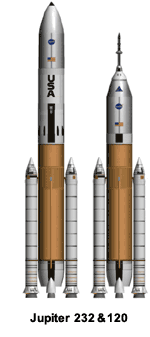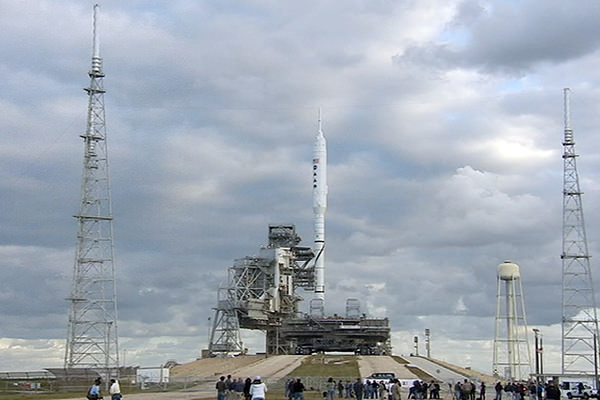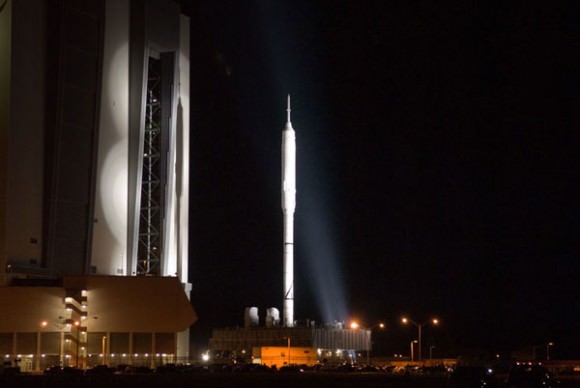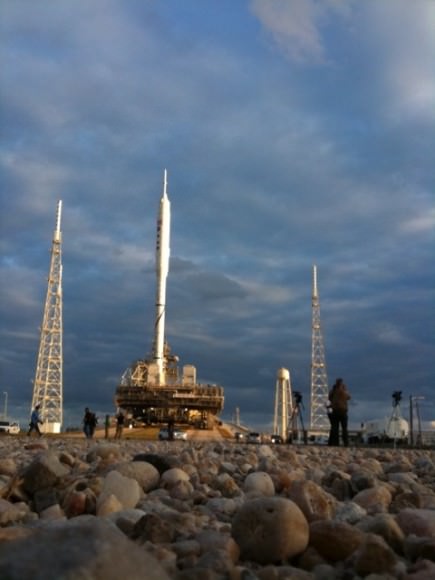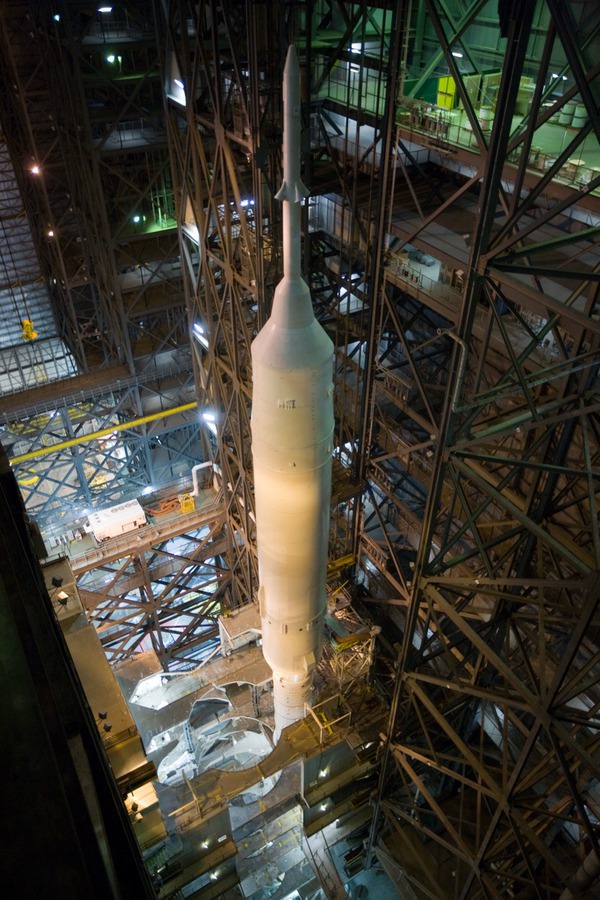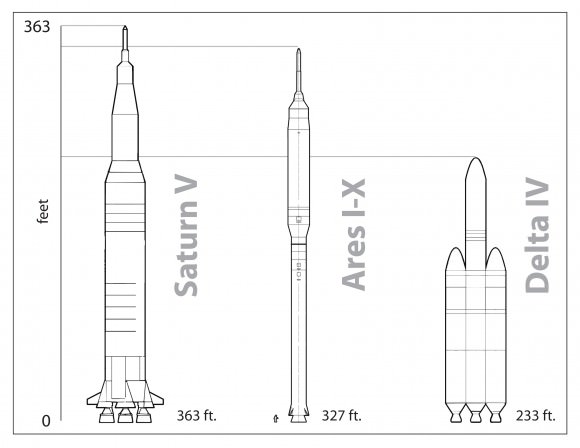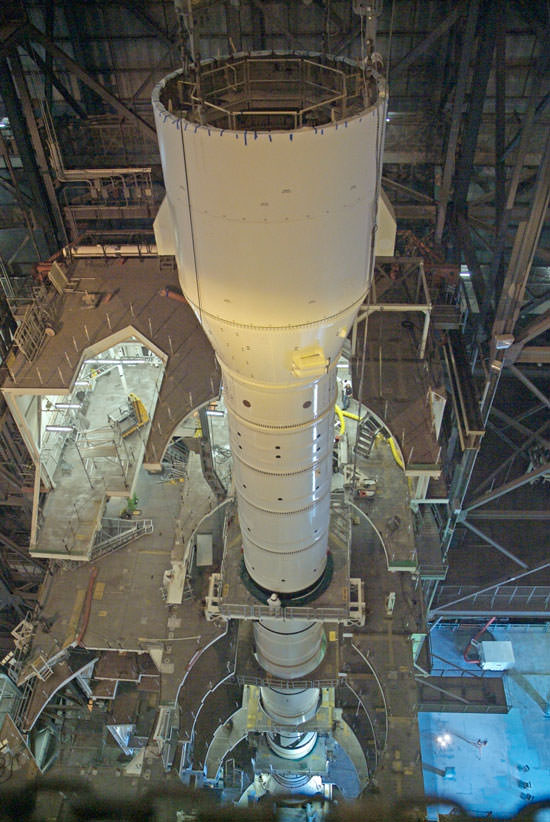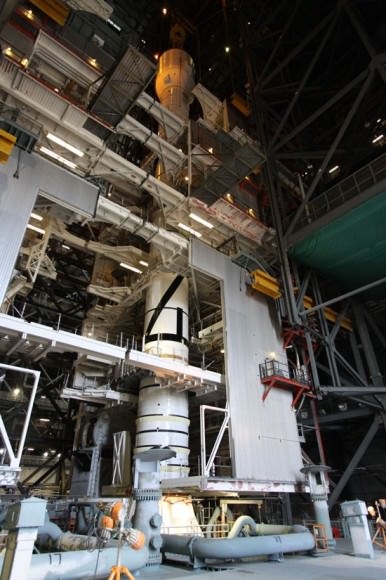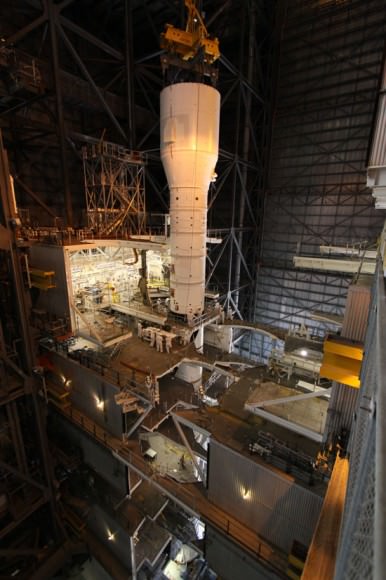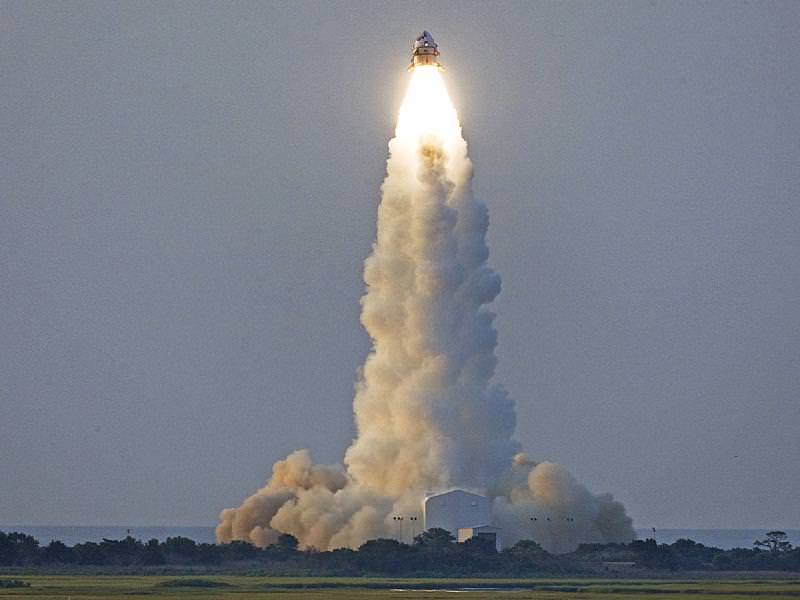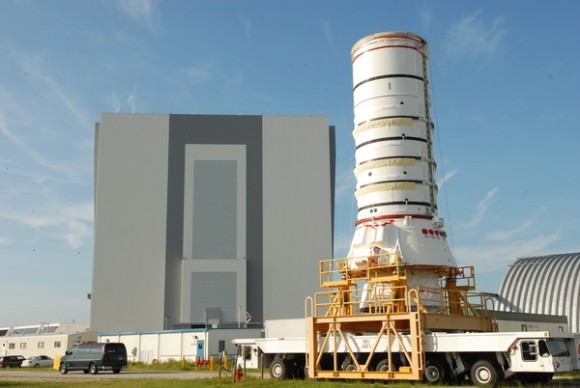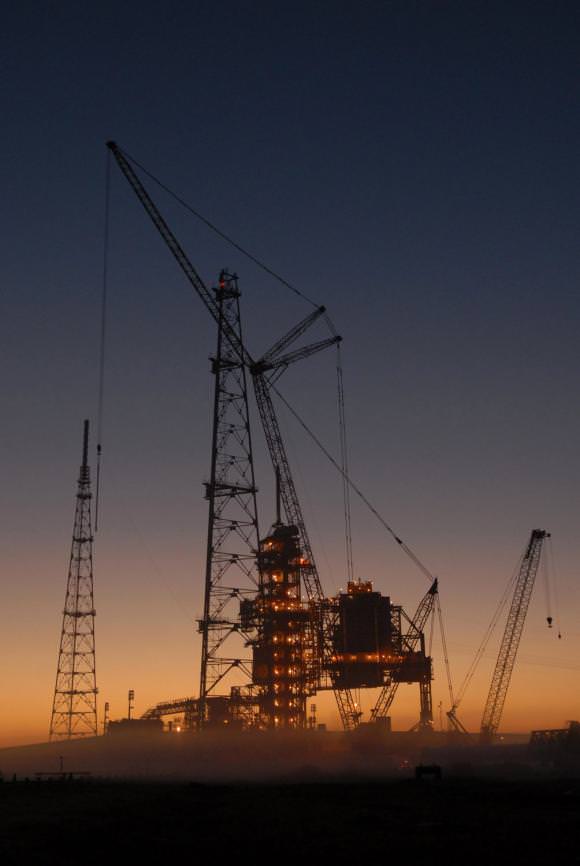[/caption]
NASA Administrator Charlie Bolden has asked for an evaluation of alternative heavy lift rockets, including DIRECT’s Jupiter launch vehicle. The evaluation is a “top priority,” according to NASASpaceflight.com, and a special team from the Marshall Space Flight Center has been commissioned to conduct the study, with the directive to have a report ready by the end of November. Looking at alternatives to the Constellation program is an apparent reaction to the final Augustine Commission report, which will be made public on Thursday.
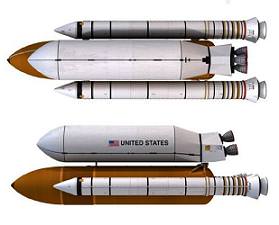
The other heavy lift vehicle also to be looked at is the Shuttle Derived Heavy Lift Launch Vehicle, which is a shuttle-based concept with a cargo carrier side mounted to the current design of the external tank. The concept is capable of launching 80mt (metric tons) into Low Earth Orbit (LEO) and around 54mt to the moon.
However sources at NASASpaceflight.com note that the DIRECT team’s Jupiter launch system has dominated early discussions at the Special Team meetings.
Bolden also recently hinted that commercial space companies could play a crucial role in NASA’s future. “Some of the most exciting companies in America today go by the names of SpaceX, Blue Origin, Armadillo Aerospace, Virgin Galactic, Xcor, Bigelow Aerospace, Masten, Flag Suit, and Ad Astra,” Bolden said in a speech at the National Association of Investment Companies. “Today, we at NASA are devising ways to work with these companies and others who will come. I urge you, and all other investors, to take notice. Space may someday soon become the new thing in investing.”
For more information on the Direct project, see our previous in-depth article here, or the DirectLauncher website.
Source: NASASpaceflight.com

